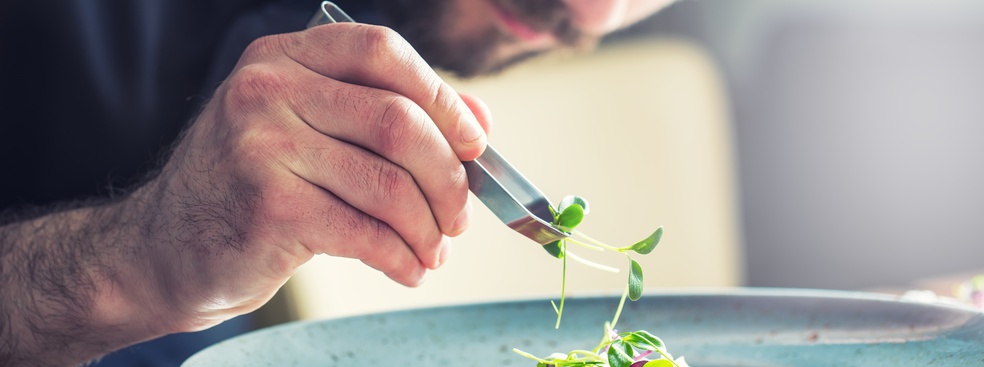From the book chapter “Creativity at Work: Generating Useful Novelty in Haute Cuisine Restaurants” by Marie-Leandre Gomez (ESSEC) and Isabelle Bouty (Dauphine), ), The Emergence of Creativity in Organizations, Perspectives on Process Organization Studies , dirigé par Raghu Garud, Barbara Simpson, Ann Langley, and Haridimos Tsoukas , Oxford University Press, 2015.
___
The world’s best chefs seem to have creativity figured out. From Alain Passard’s tomato confit with twelve flavors, to Anne-Sophie Pic’s asparagus with Arabica coffee, creative and surprising combinations of tastes and textures have been essential to the success of the world’s most recognized chefs. They garner international attention thanks to their willingness to break with established rules and push boundaries to challenge - and seduce - the palates of restaurant patrons and critics alike. And they earn their Michelin stars by finding the fine balance between day-to-day operational excellence and the inventiveness of their cuisine.
What can these masters of creativity teach us about the creative process? Perhaps organizations could find creative inspiration and boost their own creative capacities in much the same ways...
Our paper “Creativity at Work: Generating Useful Novelty in Haute Cuisine Restaurants”with co-author Isabelle Bouty (Paris Dauphine), looks to haute cuisine to answer the question: how does creativity actually happen in organizations?
In fact, creativity is in some ways a neglected corner of organizational research. For the most part, it has been addressed by researchers as a small step in the innovation process and they have focused their investigations on the sources, influences, and outputs of creativity. In our approach, we therefore look to enrich our understanding of the process by which creativity is achieved over time. Ultimately, our findings identify three facets, each of which is highly organized in terms of team, time, and space.
1. Having time to be creative
During sittings, chefs can improvise around already known phrases, mixing together elements from different dishes, or proposing some new dishes to the clients that have not yet been completely defined. However, all this activity can be considered improvisation, as the chefs and cooks are working from pre-existing schemes that they rearrange. Indeed, it is difficult, if not impossible, for cooks to be creative during regular work hours, with the rush of the sitting.
True creativity requires specific moments dedicated to this activity. In other words, to conduct creative work per se, chefs need to extract themselves from this kind of pressure and work at a different pace, which they choose in a calmer environment outside the kitchen where they are not disturbed.
The same is true in organizations: creativity needs a time and place to happen. Truly creative outputs should not be expected from individuals who are under pressure and lack the time to think outside the box or a quiet place to do so. This specific relationship between creative work and time illustrates the organizational need to distinguish between time that is dedicated to operational work and time that is set aside for creative work.
2. Working with the right team, and with the right organization
Prior research has demonstrated the importance of creative individuals. Our study, however, also underscores the importance of the many interactions between creative individuals and team members, and how these interactions nourish creativity. As sensations and emotions are deeply rooted in individuals, creative teamworking is a matter of inter-individual dynamic combination, rather than simply the addition of individual ideas.
Despite its generative nature, creativity is also a highly organized phenomenon, in terms of team, time, and space. First, creativity is organized with regards to who participates and who does not. This aspect has rarely been addressed in previous research as the composition of a creative team has most often been considered as given. We show that who participates and who does not is a key aspect in the creativity process that depends both on the chefs’ preferences and more importantly, on institutional rules that give priority to second and station chefs. For these actors, being selected to be involved in the creative process also represents a unique opportunity to learn and develop their creative abilities progressively and is particularly important in the making of future elite chefs. In this light, the integration of subordinates also plays a role in a long-term perspective on creativity. Through this contribution to the making of future haute cuisine chefs, current chefs project themselves over the long term in gastronomy as they become masters with disciples and their kitchens become schools of thought.
Creative teamworking is refining ideas on the basis of cooking as part of a reduced team in the kitchen. By identifying such a facet of the creativity process, we highlight that creativity is not merely a matter of individual serendipity, intuition or sensitivity.
3. Entering into a dialogue with clients
Naming is evoking the dish's universe and the sensations that chefs intended to convey. This is a key aspect in the creative process, which has also been neglected by researchers to date. In naming what is novel, chefs are engaging in a poetic process that reflects both their own universe, and the specific dish, with the emotions and esthetics it vehicles, as well as some key features such as ingredients, or a cooking technique that the chefs want to highlight.
Through naming, chefs enter into a dialogue with the future client. They begin a discussion that is pursued with customers during the sitting. This dialogue is prepared and expected, and mixes existing written texts and conversations that will take place in the future.
With naming, we illustrate how novelty is constrained as ingredients and preparation will have to fit in, and yet how incremental emergence can still develop through this dialogue because at each sitting, dishes remain open to further adjustments. Further process-oriented research could fruitfully investigate this dialogical dimension.
Ultimately, our analysis shows that creativity does not develop linearly by passing through different stages; it is more correctly viewed as an ebb and flow, an emerging phenomenon in which different facets interrelate in a dynamic way. This is particularly true because Michelin’s evaluations, the Haute Cuisine rules, the organizational context and restaurant’s customers are immanent in the day-today running of such restaurants. Creativity is thus intrinsically shaped by these external stakeholders. Creativity involves both personal and social influences for the generation of new and useful ideas as institutional pressure and evaluation permeate each facet.









